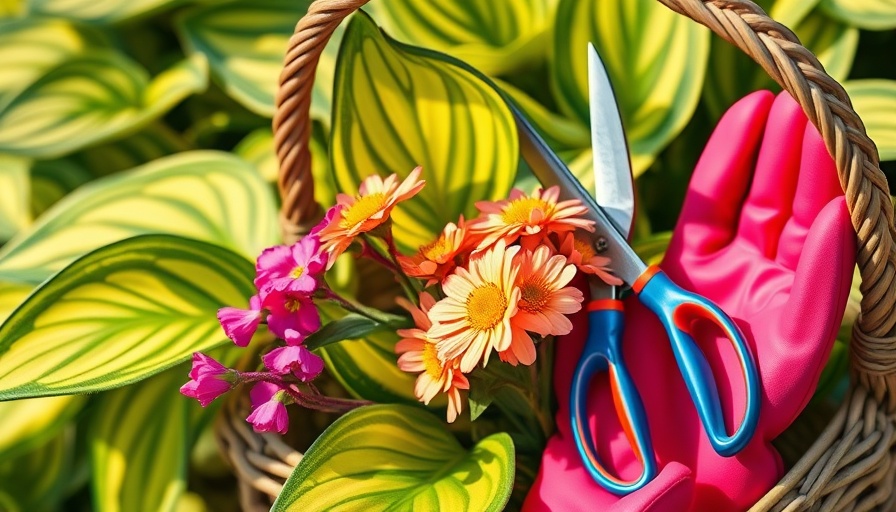
Reviving Your Perennials: A Late Summer Strategy
As summer draws to a close, it's no surprise that your garden might be looking less than its best. Perennials, the backbone of many gardens, can face fatigue from the heat and varying water levels typical of August. You are not alone if you notice your flowers wilting or looking sparse. Fortunately, there are straightforward steps you can take to rejuvenate your perennials and ensure they flourish heading into the cooler months.
Simple Pruning: The First Step to Revival
When faced with wilting foliage or sprawling stems, your first course of action should be to prune your perennials lightly. This isn't about heavy cutting but rather tidying up the less desirable parts of your plants. By removing disease-stricken areas and reassessing your plants' shape, you not only enhance their appearance but also direct precious energy toward healthy root systems, preparing them for winter.
Pruning also facilitates air circulation, which is crucial during the warmer months when humidity can lead to mold and other diseases. A little clip here and there can go a long way in promoting a final bloom before the frost arrives. Consider cutting back any excessively long stems that detract from the plant's overall shape. For a tidy effect and a boost of rejuvenation, this light trimming will help your perennials end the season on a high note.
Deadheading for a Livelier Garden
Another effective method to refresh your perennials is deadheading, or the process of removing spent blooms. This simple practice encourages your plants to redirect energy from seed production back into flowering. Keeping your garden vibrant into the fall not only enhances its appearance but also provides essential food for pollinators soon preparing for their winter rest. Aim to deadhead your key fall bloomers like asters and coreopsis to keep them looking fresh and inviting.
Additionally, strategic deadheading before autumn allows for different species of perennials to thrive concurrently. For instance, roses benefit from a final deadhead before the cold sets in, enabling them to prepare adequately for dormancy.
Managing Water Wisely: Keeping Your Plants Happy
Water management is crucial for maintaining the health of your perennials, especially in late summer when drought conditions can stress plants. Ensuring that the soil retains some moisture will help keep leaves lush and robust. As you adjust your watering schedule, consider automating the process if feasible. DIY watering hacks, like creating a slow drip system or a homemade watering device, can ensure your perennials receive consistent hydration without daily effort.
Moreover, you may explore constructing elevated planter boxes or implementing a sprinkler system, which can add an aesthetic touch while easing the burden of manual watering. This proactive approach not only keeps your plants healthy but also sets the stage for a thriving winter garden.
Embrace Late Summer Adjustments for a Successful Fall
Late summer can feel daunting as gardeners witness their landscapes transition. However, by understanding the simple adjustments that can be made—like pruning, deadheading, and optimizing watering—you can empower your garden to not just survive but thrive. A little effort now can yield beautiful blooms well into fall.
For those interested in enhancing their outdoor spaces further, consider broader projects like building composting barrels or creating a backyard planting box in Muskegon for future endeavors. These activities not only improve your garden's health but also promote sustainability.
Get Professional Help This Winter
If you're looking to maintain your garden's beauty through the changing seasons, reach out to your local lawn care experts. Norther-LawnCare.com offers top-notch property management services that include winter plowing and seasonal care. Contact Everett Lucas at 231-450-3414 to keep your landscape looking its best.
 Add Row
Add Row 
 Add
Add 


Write A Comment